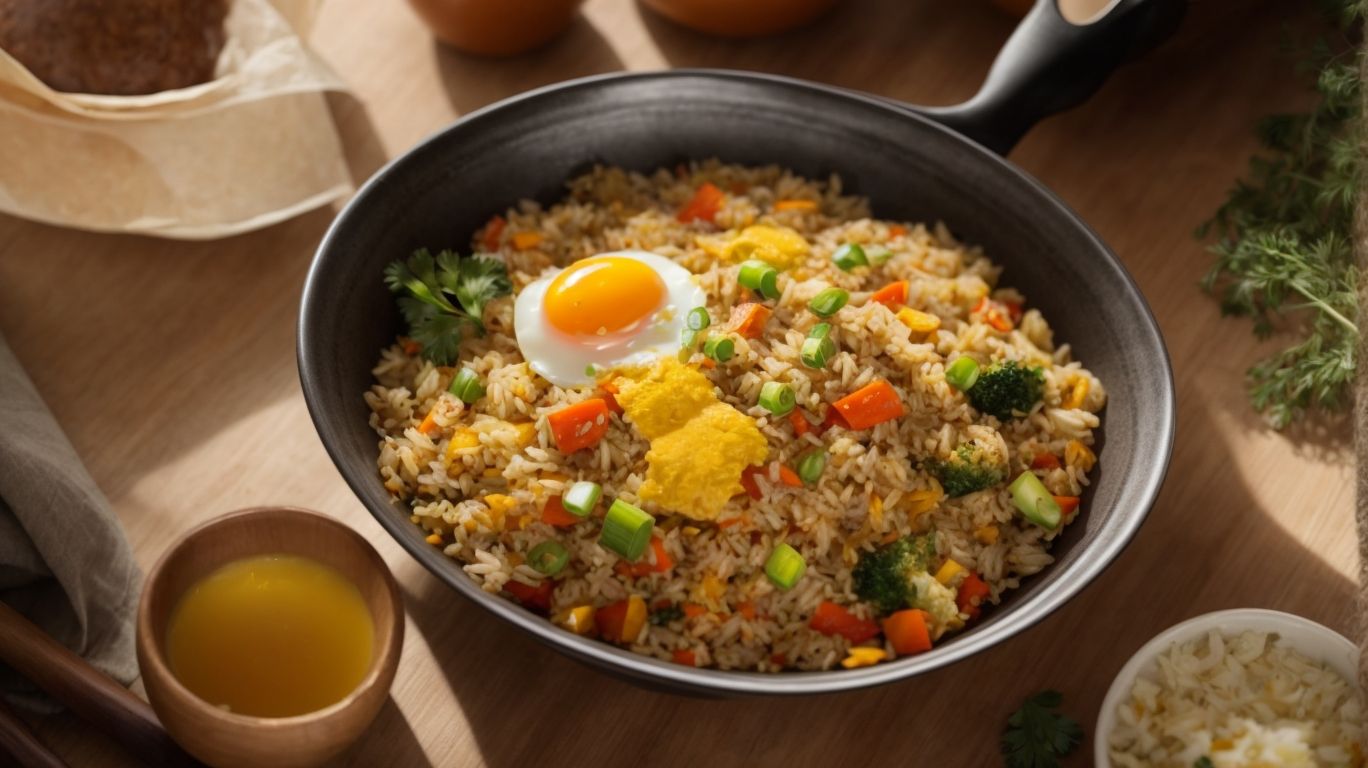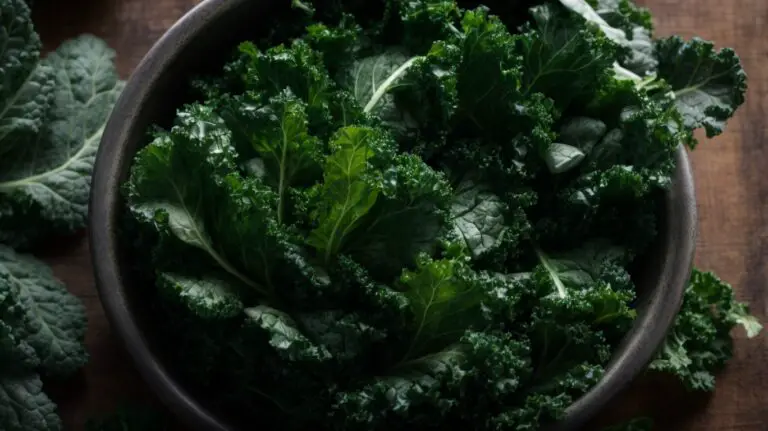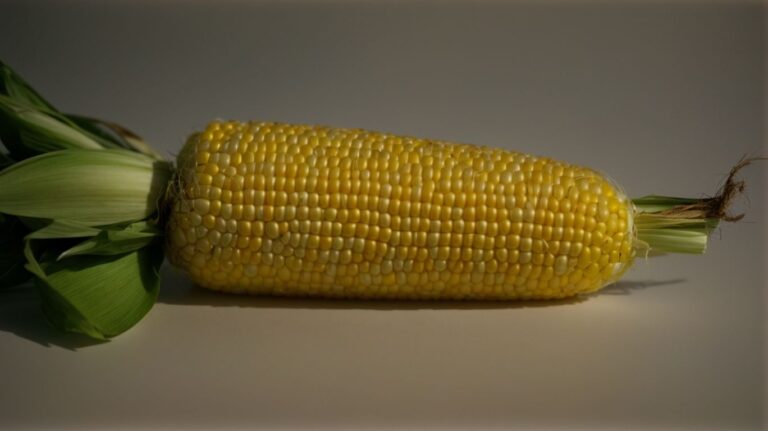How to Cook Fried Rice Without Frying?
Fried rice is a beloved dish with a rich history, but have you ever wondered if you could enjoy all the flavors without the frying?
We will explore the health and environmental benefits of non-fried fried rice and guide you on the tools and ingredients needed to create this delicious dish at home.
Follow our step-by-step guide and learn some tips for perfecting your non-fried fried rice. Discover mouthwatering variations to try out as well!
Key Takeaways:
What is Fried Rice?
Fried rice is a popular dish that involves cooking rice with various ingredients such as vegetables, protein, and seasonings in a wok or frying pan.
This dish originated in China but has evolved into numerous variations worldwide, each with its own unique twist on this classic recipe.
One of the most common types of fried rice is Yangzhou fried rice, which typically includes a mix of shrimp, roast pork, eggs, and peas, giving it a colorful and flavorful appeal.
Thai pineapple fried rice, on the other hand, adds a tropical touch with the inclusion of pineapple, cashews, and raisins, balancing sweet and savory flavors.
History of Fried Rice
The history of fried rice dates back to ancient China, where it was first created as a way to repurpose leftover rice by stir-frying it with ingredients such as garlic, green onions, and sesame oil.
This popular dish was born out of necessity, transforming basic ingredients into a flavorful delicacy that has stood the test of time. Over the centuries, this simple yet versatile dish has become a staple in Chinese cuisine, symbolizing the resourcefulness and innovation of Chinese cooks.
Fried rice has since evolved to include a myriad of variations, influenced by different regions and local ingredients, showcasing the diversity and adaptability of Chinese culinary traditions.
Why Cook Fried Rice Without Frying?
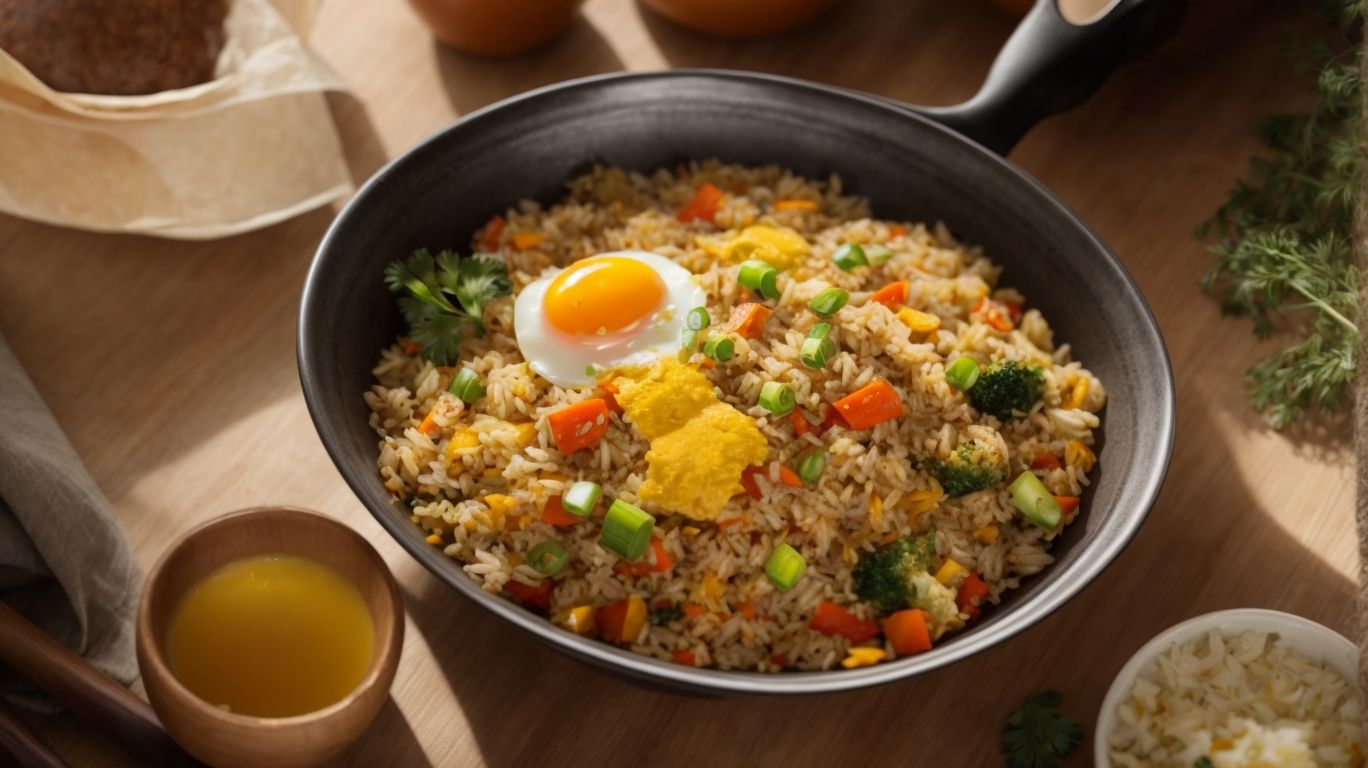
Credits: Poormet.Com – Walter Lopez
Cooking fried rice without frying offers a quick and convenient way to enjoy this flavorful dish using pre-cooked rice, vegetables, soy sauce, and stock in a non-frying method.
By opting for this preparation style, you can significantly reduce the amount of oil used in the dish, making it a healthier option. It’s a fantastic way to use up leftover rice, making it a practical and economical choice. Non-fried fried rice is a perfect solution for those looking for emergency meal ideas that are both tasty and nutritious.
Health Benefits of Non-fried Fried Rice
Non-fried fried rice offers a healthier alternative by incorporating nutrient-rich ingredients such as vegetables, garlic, and a balanced seasoning profile to enhance the dish’s nutritional value.
Garlic, a key component in non-fried fried rice, not only adds a delicious flavor but also boosts the dish’s health benefits with its antioxidant and anti-inflammatory properties.
Vegetables like carrots, peas, and bell peppers bring color, texture, and a wealth of vitamins and minerals to the dish, promoting overall well-being.
By opting for a balanced seasoning blend of soy sauce, ginger, and occasional herbs, non-fried fried rice achieves a satisfying taste while keeping sodium levels in check for a heart-healthy meal.
Environmental Benefits of Non-fried Fried Rice
Choosing non-fried fried rice options can have positive environmental impacts by reducing the consumption of certain ingredients like bacon, mushrooms, and chicken typically used in traditional fried rice recipes.
Opting for non-fried fried rice variations not only reduces the demand for animal products, which have a significant ecological footprint due to livestock farming practices, but also promotes the use of ingredients like tofu, tempeh, and various vegetables that are more sustainable and plant-based.
By incorporating these plant-based alternatives, individuals can contribute to lowering greenhouse gas emissions, conserving water resources, and minimizing deforestation associated with intensive animal agriculture.
Tools and Ingredients for Non-fried Fried Rice
To prepare non-fried fried rice, essential tools include a large skillet or wok, while key ingredients comprise soy sauce, flavorful stock, bacon, and aromatic jasmine rice.
When making this dish, having a dependable rice cooker or a pot with a tight-fitting lid is vital for perfectly cooked rice. You’ll also need a sharp knife for cutting the bacon or other proteins into bite-sized pieces. Having measuring cups and spoons for accurate portioning of ingredients is crucial for achieving a well-balanced flavor in your dish. Don’t forget to have a reliable spatula or wooden spoon for stirring and mixing the ingredients together in the skillet or wok.
Tools Needed
Stock, white pepper, and a sharp knife are essential tools needed to prepare non-fried fried rice, ensuring flavorful broth, aromatic seasoning, and precise ingredient preparation.
Having a good quality stock as the base for your non-fried fried rice is crucial, as it lays the foundation for rich flavors. Seasoning with the right amount of white pepper adds a distinctive taste that sets this dish apart. A sharp knife is essential for cutting ingredients uniformly, allowing for even cooking and consistent texture in every bite.
Ingredients Needed
Key ingredients for non-fried fried rice include fragrant sesame oil, uncooked long-grain white rice, and a variety of fresh vegetables and proteins for a flavorful and satisfying dish.
Alongside these mainstays, classic seasonings like soy sauce, garlic, and ginger infuse the dish with depth and complexity. For a boost of umami, adding a dash of oyster sauce can work wonders. Texture is crucial too, so including ingredients such as crunchy water chestnuts or tender bamboo shoots can elevate the overall experience. To make your non-fried fried rice a complete meal, consider protein options like diced chicken, shrimp, or even tofu for vegetarians. The key is to experiment with different combinations to find the perfect balance of flavors and textures.
Step-by-step Guide to Cooking Non-fried Fried Rice

Credits: Poormet.Com – Timothy Wright
Creating non-fried fried rice involves a step-by-step process to achieve a fluffy texture, balanced flavors, and optimal seasoning without traditional frying methods.
To begin, start by cooking your choice of rice, ensuring it’s slightly undercooked to avoid mushiness in the final dish. Next, spread the cooked rice on a tray to cool and dry out slightly, which helps in preventing clumping. Meanwhile, prepare a flavorful seasoning mixture using ingredients like soy sauce, sesame oil, garlic, and ginger to infuse the rice with umami depth.
Once the rice has cooled, gently break up any clumps with a fork and fold in the seasoning mixture, distributing it evenly. This ensures that every grain absorbs the delicious flavors, creating a well-balanced taste profile without excess oil.
Step 1: Preparing the Rice
Begin by cooking the rice according to the chosen method, whether using a rice cooker, stovetop, or instant pot, ensuring proper fluffiness and texture for the non-fried fried rice dish.
For optimal results, basmati rice is often preferred for its aromatic quality and ability to retain a fluffy texture. Rinse the rice thoroughly before cooking to remove excess starch and prevent clumping. When using a rice cooker, simply add the rice and water in the recommended ratio and let it cook until done. On the stovetop, bring the rice and water to a boil, then reduce heat to low, cover, and simmer until the water is absorbed. In an instant pot, follow the manufacturer’s instructions for precise cooking settings.
Step 2: Preparing the Vegetables and Protein
Next, chop and sauté a colorful array of fresh vegetables and protein choices like fish or frozen vegetables to add depth and nutritional value to the non-fried fried rice dish.
Choosing fresh vegetables such as bell peppers, peas, carrots, and mushrooms not only brings vibrant colors to the dish but also provides a range of essential nutrients. Sauteing these vegetables in a wok with a touch of oil enhances their flavors and textures, creating a delightful mix of crunchiness and tenderness.
In terms of protein, fish offers a light and flavorful option that pairs perfectly with the vegetable medley. Alternatively, utilizing convenient frozen seafood blends can save time without compromising on taste. Seafood adds a rich umami taste to the dish and boosts its overall nutritional profile.
Step 3: Cooking the Non-fried Fried Rice
Combine the prepared rice, vegetables, and seasonings in a baking dish for a non-fried fried rice casserole that can be conveniently baked in an emergency or as a flavorful meal option.
-
Ensure that the mixture is evenly spread out in the baking dish to encourage uniform cooking.
-
Before placing it in the oven, cover the casserole with a layer of foil to seal in the moisture and prevent the rice from drying out.
-
For added flavor depth, you can sprinkle a generous amount of soy sauce over the top before baking.
-
Set the oven to the recommended temperature and bake the casserole until the rice is tender and the vegetables are cooked to perfection.
Tips for Perfecting Non-fried Fried Rice
To enhance the non-fried fried rice experience, consider using premium soy sauce, fresh garlic, and vibrant green onions for added depth of flavor and authenticity.
In terms of selecting soy sauce, opt for a high-quality, rich, and slightly sweet variety to elevate the umami profile of your dish.
Freshly minced garlic adds a robust and aromatic essence that permeates through the rice, enhancing each bite with a burst of flavor.
Finely sliced green onions not only provide a pop of color but also contribute a refreshing, slightly sharp note that balances the richness of the dish.
Variations of Non-fried Fried Rice
Explore a variety of non-fried fried rice recipes with different flavor profiles, seasoning combinations, and preparation methods to create unique and satisfying dishes without traditional frying.
One delicious option to try is pineapple fried rice, where the sweetness of pineapple blends beautifully with savory ingredients like shrimp, chicken, and cashews. For a vegetarian alternative, consider a coconut curry fried rice packed with vibrant flavors of curry powder, coconut milk, and colorful veggies. If you prefer a spicy kick, experiment with a sriracha-infused fried rice that brings heat and depth to the dish.
For those looking to elevate the umami factor, a truffled mushroom fried rice combines earthy mushrooms with luxurious truffle oil, creating a sophisticated flavor profile. Alternatively, you can opt for a citrus-infused fried rice using zesty lemon or lime zest to brighten up the dish, complemented by fresh herbs like cilantro and basil for a refreshing twist.
Vegetarian Non-fried Fried Rice
Vegetarian non-fried fried rice offers a flavorful and nutritious option featuring a medley of rice, assorted vegetables, earthy mushrooms, and a hint of sesame oil for a satisfying meat-free meal.
What makes this dish truly special is the combination of crunchy carrots, vibrant bell peppers, and tender snow peas, all mingling together to create a burst of colors and flavors in every bite. The earthy umami taste of the mushrooms blends perfectly with the slightly nutty aroma of the sesame oil, elevating the dish to a whole new level. This vegetarian delight is not only packed with nutrients but also incredibly satisfying, perfect for those looking for a wholesome and hearty meal without any meat. Adding some tofu or tempeh chunks can further enhance the protein content, making it a complete vegetarian feast.
Seafood Non-fried Fried Rice
Indulge in a seafood-infused non-fried fried rice bursting with rich flavors, combining an array of oceanic ingredients, precise cooking methods, and a dash of white pepper for a delightful culinary experience.
This delectable dish boasts a medley of succulent shrimp, tender crab meat, and plump scallops that harmoniously blend with the fluffy grains of rice. The seafood is expertly sautéed to perfection, ensuring each bite is packed with briny goodness. The technique of incorporating the seafood towards the end of the cooking process retains its freshness and distinct flavors, elevating the overall taste profile of the dish.
Meat-based Non-fried Fried Rice
Savor the succulent flavors of meat-based non-fried fried rice infused with premium soy sauce, aromatic green onions, a splash of Chinese cooking wine, and tender honey garlic chicken for a delectable dining experience.
These savory elements come together harmoniously in each mouthful, creating a symphony of umami goodness that tantalizes the taste buds. The umami-rich soy sauce adds depth and complexity to the dish, while the fragrant green onions provide a fresh contrast. The touch of Chinese cooking wine accentuates the flavors, offering a subtle hint of sweetness and acidity. And let’s not forget the star of the show – the tender honey garlic chicken – which steals the spotlight with its juicy, flavorful presence. Each bite is a delightful balance of textures and aromas, making this dish a true culinary indulgence.
Conclusion
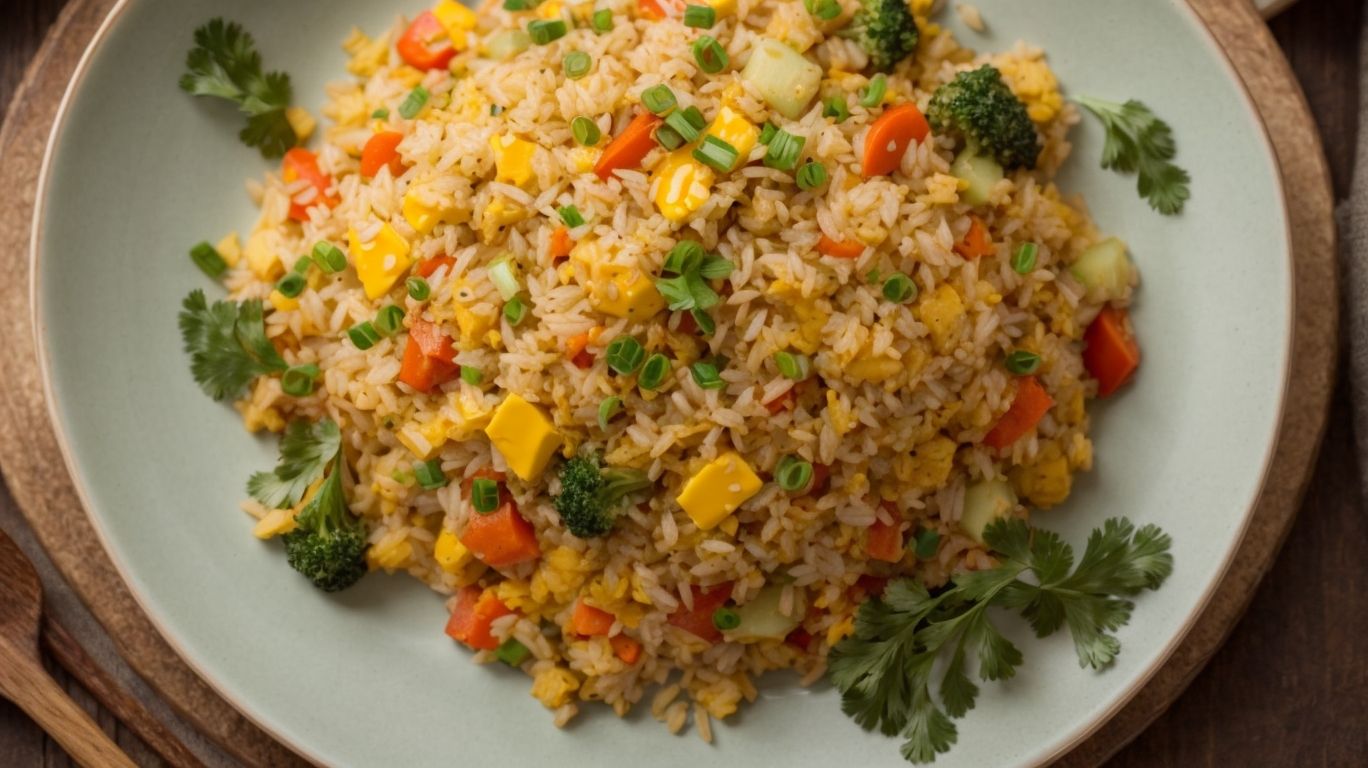
Credits: Poormet.Com – Willie Carter
In conclusion, non-fried fried rice offers a versatile and healthier alternative to traditional fried rice recipes, incorporating a range of ingredients, cooking methods, and flavor profiles to create delicious and satisfying meals.
One of the key benefits of opting for non-fried fried rice is its ability to deliver the same tasty experience as traditional fried rice but with significantly reduced oil content, making it a lighter and more nutritious option. The beauty of non-fried fried rice lies in its adaptability; you can personalize it with various proteins such as chicken, shrimp, tofu, or vegetables, and experiment with different seasonings like soy sauce, garlic, ginger, or chili for an exciting culinary journey.
Frequently Asked Questions
1. How to Cook Fried Rice Without Frying?
Fried rice is a staple dish in many households, but frying can be unhealthy and messy. Here’s how to make a delicious and healthier version of fried rice without frying.
2. Can I still achieve the same taste and texture without frying?
Yes, you can! By following the right steps and using the right ingredients, you can achieve the same delicious taste and texture of fried rice without frying.
3. What ingredients do I need to cook fried rice without frying?
The main ingredients you will need are rice, vegetables, protein (such as chicken or shrimp), oil, soy sauce, and seasonings. You can also add other vegetables and spices to your liking.
4. How do I cook the rice for fried rice?
It is important to use day-old cooked rice for the best results. If you don’t have any leftover rice, you can cook a fresh batch and spread it out on a baking sheet to cool before using it in the recipe.
5. Can I use any type of rice for fried rice?
While traditionally, long-grain white rice is used for fried rice, you can also use brown rice, cauliflower rice, or even quinoa for a healthier option.
6. Are there any tips for making the perfect fried rice without frying?
Yes, here are some tips: make sure your rice is cooled before using, use high heat and constantly stir while cooking, and add the soy sauce and other sauces towards the end to prevent the rice from getting too soggy. You can also add a small amount of oil for flavor and texture.

